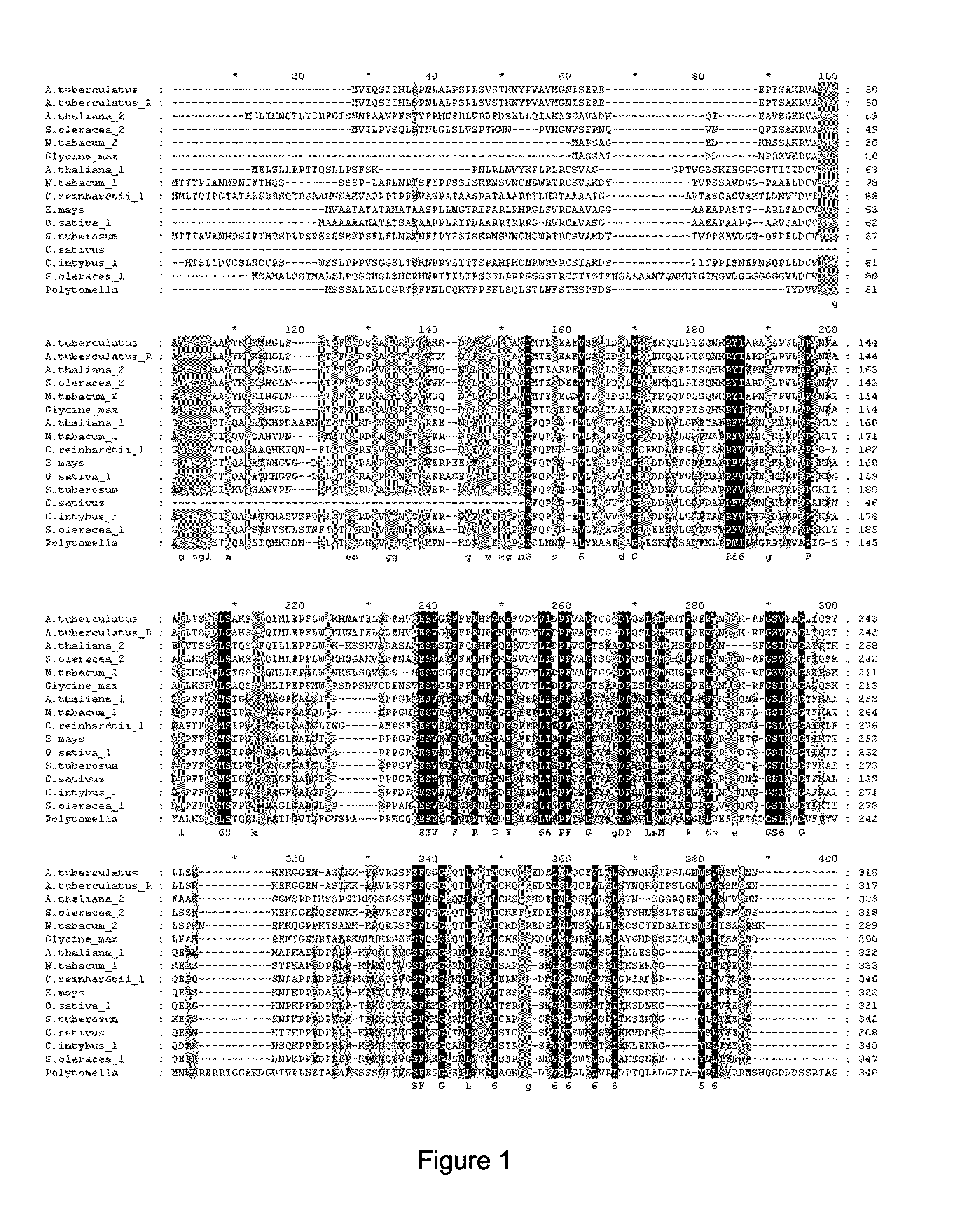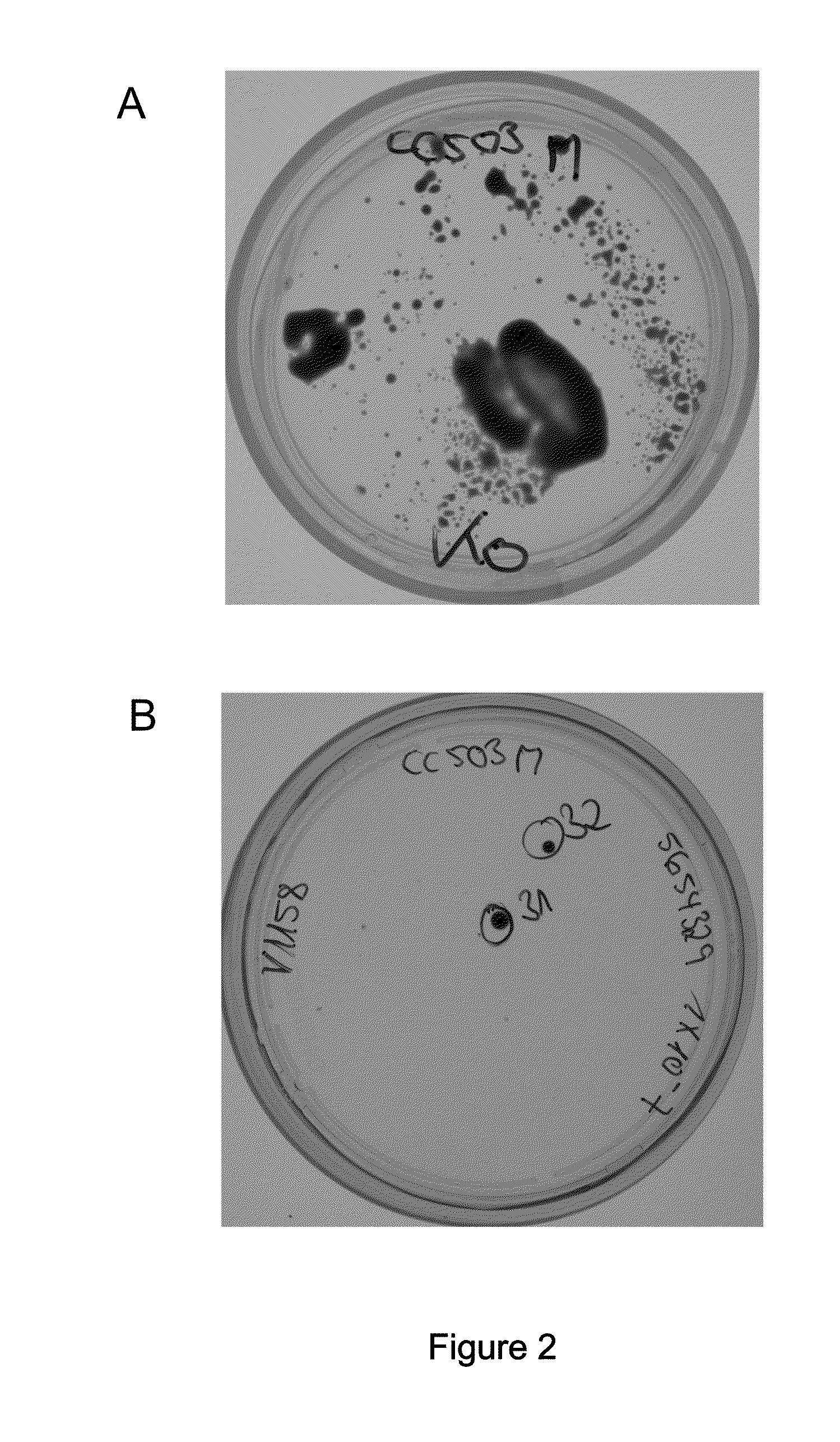Plants Having Increased Tolerance to Herbicides
a technology of herbicides and plants, applied in the field of plants having increased tolerance to herbicides, can solve the problems of rapid cell death, accumulation of protoporphyrinogen ix in chloroplasts and mitochondria, etc., and achieve the effect of increasing resistance to benzoxazinone-derivative herbicides
- Summary
- Abstract
- Description
- Claims
- Application Information
AI Technical Summary
Benefits of technology
Problems solved by technology
Method used
Image
Examples
example 1
Site-Directed Mutagenesis of Amaranthus PPO
Cloning of Aramanthus PPO
[0389]The Amaranthus tuberculatus coding sequence for PPO-susceptible and -resistant isoforms, and all mutant combinations and multiple mutations, (SEQ ID No: 1, 3, 5, 7) were synthesized and cloned by Geneart (Geneart A G, Regensburg, Germany).
[0390]Plasmids were isolated from E. coli TOP10 by performing a plasmid minpreparation and confirmed by DNA sequencing.
Expression and Purification of Recombinant Wildtype and Mutant PPO
[0391](Taken from: Franck E. Dayan, Pankaj R. Daga, Stephen 0. Duke, Ryan M. Lee, Patrick J. Tranel, Robert J. Doerksen. Biochemical and structural consequences of a glycine deletion in the α-8 helix of protoporphyrinogen oxidase. Biochimica et Biophysica Acta 1804 (2010), 1548-56)
[0392]Clones in pRSET vector were transformed into BL21(DE3)-pLysS strain of E. coli. Cells were grown in 250 mL of LB with 100 μgmL-1 of carbenicillin, shaking overnight at 37° C. Cultures were diluted in 1 L of LB w...
example 2
Engineering PPO-Derivative Herbicide Tolerant Plants Having Wildtype or Mutated PPO Sequences
[0397]PPO-derivative herbicide tolerant soybean (Glycine max) or corn (Zea mays) plants are produced by a method as described by Olhoft et al. (US patent 2009 / 0049567). For transformation of soybean or Arabidopsis thaliana, Wildtype or Mutated PPO sequences are cloned with standard cloning techniques as described in Sambrook et al. (Molecular cloning (2001) Cold Spring Harbor Laboratory Press) in a binary vector containing resistance marker gene cassette (AHAS) and mutated PPO sequence (marked as GOD in between ubiquitin promoter (PcUbi) and nopaline synthase terminator (NOS) sequence. For corn transformation, Wildtype or Mutated PPO sequences are cloned with standard cloning techniques as described in Sambrook et al. (Molecular cloning (2001) Cold Spring Harbor Laboratory Press) in a binary vector containing resistance marker gene cassette (AHAS) and mutated PPO sequence (marked as GOD in b...
example 3
Tissue Culture Conditions
[0400]An in vitro tissue culture mutagenesis assay has been developed to isolate and characterize plant tissue (e.g., maize, rice tissue) that is tolerant to protoporphyrinogen oxidase inhibiting herbicides, (saflufenacil, benzoxazinone-derivative herbicide, flumioxazin, butafenacil, acifluorfen, lactofen, bifenox, diuron, sulfentrazone). The assay utilizes the somaclonal variation that is found in in vitro tissue culture. Spontaneous mutations derived from somaclonal variation can be enhanced by chemical mutagenesis and subsequent selection in a stepwise manner, on increasing concentrations of herbicide.
[0401]The present invention provides tissue culture conditions for encouraging growth of friable, embryogenic maize or rice callus that is regenerable. Calli were initiated from 4 different maize or rice cultivars encompassing Zea mays and Japonica (Taipei 309, Nipponbare, Koshihikari) and Indica (Indica 1) varieties, respectively. Seeds were surface sterili...
PUM
| Property | Measurement | Unit |
|---|---|---|
| Electrical resistance | aaaaa | aaaaa |
| Herbicidal properties | aaaaa | aaaaa |
Abstract
Description
Claims
Application Information
 Login to View More
Login to View More - R&D
- Intellectual Property
- Life Sciences
- Materials
- Tech Scout
- Unparalleled Data Quality
- Higher Quality Content
- 60% Fewer Hallucinations
Browse by: Latest US Patents, China's latest patents, Technical Efficacy Thesaurus, Application Domain, Technology Topic, Popular Technical Reports.
© 2025 PatSnap. All rights reserved.Legal|Privacy policy|Modern Slavery Act Transparency Statement|Sitemap|About US| Contact US: help@patsnap.com



